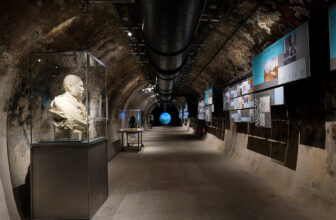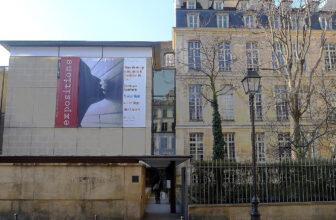
Is It Worth Visiting the Musée Guimet in Paris? What Is the Guimet Museum Famous For?
Paris, the City of Light, is world-renowned for its incredible art and culture, epitomized by institutions like the Louvre, the Musée d’Orsay, and the Centre Pompidou. However, tucked away in the elegant 16th arrondissement lies a lesser-known gem: the Musée National des Arts Asiatiques – Guimet, commonly known as the Guimet Museum. Dedicated to Asian art and culture, it offers a unique perspective often overshadowed by Paris’s more famous attractions. If you’re wondering whether it’s worth a visit and what makes it special, this guide will explore its highlights, historical significance, and visitor experience.
A Brief History of the Guimet Museum
The Guimet Museum was founded in 1889 by Emile Guimet, an industrialist and collector from Lyon with a passion for Asian art and culture. Guimet initially opened the museum in his hometown, but it was later moved to Paris, where it became part of the French national museum system. Over the years, it has grown into one of the world’s most comprehensive collections of Asian art, housing artifacts from countries such as China, Japan, India, Korea, and Southeast Asia.
The museum’s mission has always been to promote cross-cultural understanding and appreciation of Asian civilizations. Its vast collection spans thousands of years, from ancient times to the modern era, showcasing the rich diversity and depth of Asian cultures.
What Makes the Guimet Museum Famous?
The Guimet Museum is renowned for its unparalleled collection of Asian art and artifacts. Here are some of the key highlights that make it a must-visit destination for art enthusiasts and cultural explorers:
- Extensive Asian Art Collections
- Buddhist Art: One of the museum’s main attractions is its extensive collection of Buddhist art. Visitors can marvel at serene Buddha statues, intricate carvings, and sacred relics from India, Nepal, Tibet, and Southeast Asia. The gallery beautifully narrates the spread of Buddhism across Asia and its diverse artistic expressions.
- Chinese Art: The Chinese collection features exquisite ceramics, jade sculptures, ancient bronzes, and calligraphy, providing insight into the country’s imperial history and artistic achievements.
- Japanese Art: The museum boasts an impressive array of Japanese artworks, including samurai armor, ukiyo-e woodblock prints, and delicate tea ceremony utensils. These pieces reflect Japan’s unique blend of tradition and innovation.
- Indian and Himalayan Art: Highlights include vibrant miniature paintings, intricate temple sculptures, and ritual objects that illuminate the spiritual and cultural traditions of India and the Himalayas.
- Architectural Marvel The museum itself is an architectural masterpiece. Its elegant design combines classical and modern elements, creating a serene and contemplative environment that complements the art on display. The layout guides visitors through the different regions of Asia, allowing for a seamless exploration of the continent’s artistic heritage.
- Temporary Exhibitions The Guimet Museum frequently hosts temporary exhibitions that delve deeper into specific themes, artists, or periods. These exhibitions often feature rare and borrowed artifacts, offering fresh perspectives and expanding the narrative of Asian art.
- The Panthéon Bouddhique Located near the main museum, the Panthéon Bouddhique is a dedicated space for Buddhist art and meditation. This tranquil annex houses a stunning collection of Buddhist statues, ritual objects, and a traditional Japanese garden. It provides a meditative escape from the bustling city.
- Library and Archives The museum’s library is a treasure trove for researchers and enthusiasts. It houses an extensive collection of books, manuscripts, and photographs related to Asian art and culture, making it an invaluable resource for academic study.
Why Visit the Guimet Museum?
If you’re still debating whether the Guimet Museum deserves a spot on your Paris itinerary, consider the following reasons:
- A Unique Perspective on Art and Culture While the Louvre and the Musée d’Orsay focus on Western art, the Guimet Museum offers a deep dive into the art and traditions of Asia. It’s an opportunity to broaden your cultural horizons and gain a deeper appreciation for the diversity of human creativity.
- World-Class Collections The quality and scope of the Guimet Museum’s collection are on par with some of the best Asian art museums globally, such as the Asian Art Museum in San Francisco or the Victoria and Albert Museum’s Asia collection in London.
- Less Crowded and More Intimate Compared to Paris’s more famous attractions, the Guimet Museum is relatively uncrowded, allowing for a more relaxed and intimate viewing experience. You can take your time to appreciate the artworks without the pressure of large crowds.
- Ideal for History and Art Enthusiasts Whether you’re a seasoned art lover or a curious traveler, the Guimet Museum’s rich narratives and stunning exhibits are sure to captivate your interest. The museum’s well-curated displays provide historical context, making the experience both educational and enjoyable.
- A Serene Escape The peaceful ambiance of the museum and its gardens offers a welcome respite from the hustle and bustle of Paris. It’s a place where you can reflect, learn, and immerse yourself in the beauty of Asian art.
Practical Information for Visitors
- Location: The Guimet Museum is located at 6 Place d’Iéna, 75116 Paris, near the Trocadéro and the Eiffel Tower.
- Opening Hours: The museum is typically open from 10:00 AM to 6:00 PM, Tuesday through Sunday. It is closed on Mondays and certain holidays.
- Tickets: Admission fees are generally affordable, and discounts are available for students, seniors, and groups. Some days may offer free entry, so it’s worth checking the museum’s website for details.
- Accessibility: The museum is wheelchair accessible, and services such as audio guides and guided tours are available to enhance the visitor experience.
- Nearby Attractions: Combine your visit with nearby attractions like the Eiffel Tower, the Palais de Tokyo, or the Trocadéro Gardens for a full day of exploration.
Tips for Making the Most of Your Visit
- Plan Ahead: Check the museum’s website for information on temporary exhibitions, guided tours, and special events. This will help you make the most of your visit.
- Take Your Time: The Guimet Museum’s collections are vast and varied, so allocate at least two to three hours to explore its galleries fully.
- Visit the Panthéon Bouddhique: Don’t miss this annex, which offers a deeper insight into Buddhist art and culture. It’s a hidden gem within the museum complex.
- Photography: While photography is allowed in most areas, be mindful of specific restrictions and avoid using flash.
- Combine with Nearby Attractions: The museum’s location makes it easy to pair with other iconic Parisian landmarks, creating a well-rounded cultural day.
Is the Guimet Museum Worth Visiting?
Absolutely. The Guimet Museum is a treasure trove of Asian art and culture, offering a unique and enriching experience that stands out among Paris’s many attractions. Its world-class collections, serene atmosphere, and insightful exhibitions make it a must-visit for anyone interested in exploring the artistic and cultural heritage of Asia. Whether you’re an art enthusiast, a history buff, or simply looking for a quieter yet equally inspiring alternative to Paris’s more famous museums, the Guimet Museum is well worth your time.
So, the next time you find yourself in Paris, take a detour from the well-trodden paths and immerse yourself in the captivating world of the Guimet Museum. It’s an experience that will leave you with a deeper appreciation for the beauty and diversity of Asian art.




